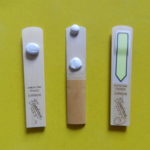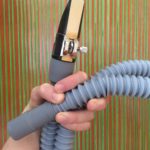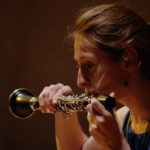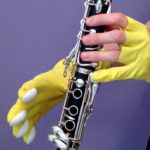The first “prepared” work that I approached was Vinko Globokar’s Voix instrumentalisée, for a bass clarinet player. The subtitle here is truer than ever, since the instrumentalist is asked to remove the mouthpiece from the bass clarinet and play the instrument without it. That is, without its primary sound source, the reed-mouthpiece combination. While in ordinary playing is the reed basic sound to be instrumentalized (filtered by the instrument body to its final sonic features), in this work Globokar uses the voice to replace it, and the instrument for its resonance and filtering.
A new set of sound techniques are then introduced: singing, speaking and blowing into the bass clarinet’s neck, using pure consonantal sounds, making the lips vibrate in the embouchure as a trombone player would and using the keys to modulate all this produced sound.
Although the words can never be clearly understood, the spoken and sung material is based on the sentence “L’art et la science ne peuvent exister sans la possibilité d’exprimer des idées paradoxales.” (Art and science cannot exist without the possibility of expressing paradoxical ideas). The mentioned paradox is immediately evident to the listener, that following the performance moves from dramatic to grotesque episodes, immersed in a heterogeneous and iridescent sonic world.
Globokar’s approach is clearly provocative and at the same time extremely powerful. This new, apparently “deprived” instrument, produces autonomous sounds, filters and modulates the voice, amplifies the percussive-articulation sounds. The ordinary position of mouthpiece and reed would have been a huge obstacle to the desired centrality of voice and articulation (let’s just think of the stable embouchure needed in traditional playing), with the full range of articulatory movements (of mouth/tongue/teeth) constrained by the same physical presence of the mouthpiece into the performer’s mouth. Temporarily freed of it, we gain the “space” (physical and aesthetic) for the voice to become a powerful sound source.



